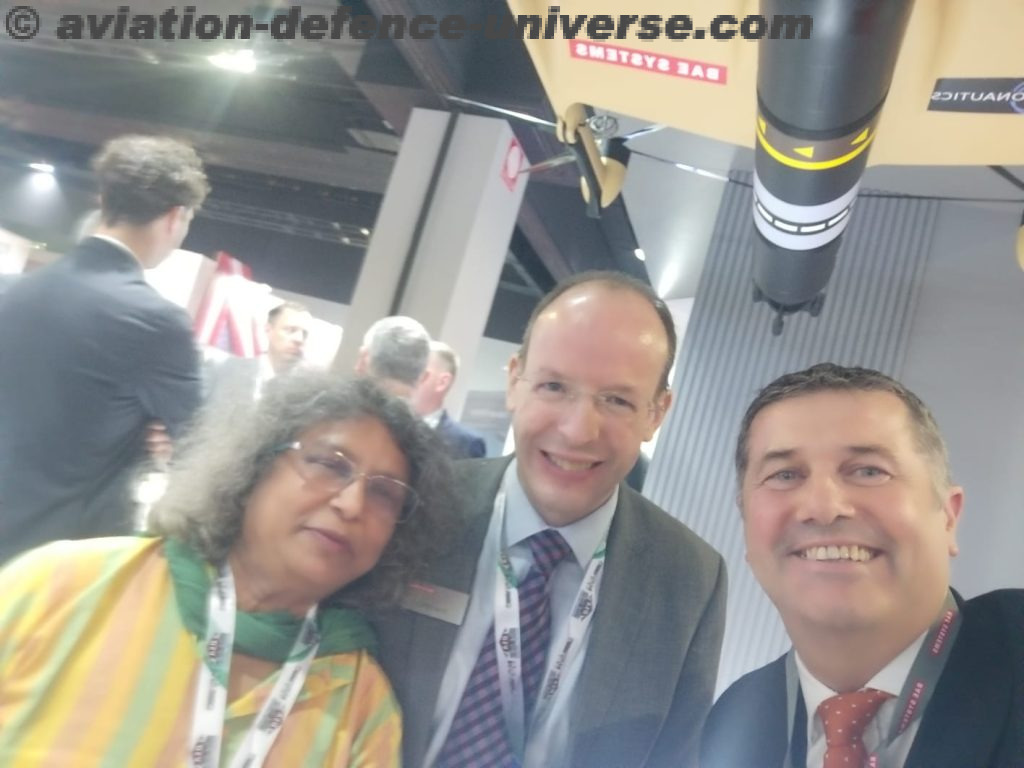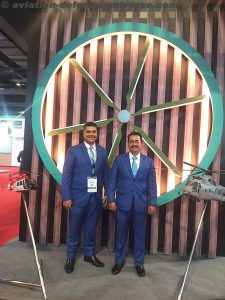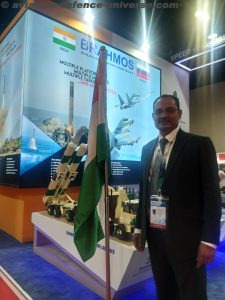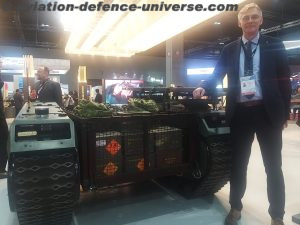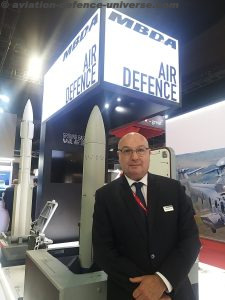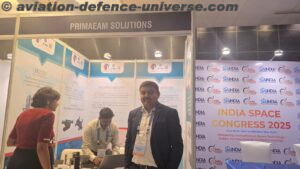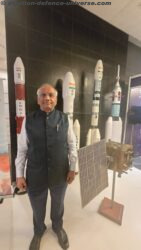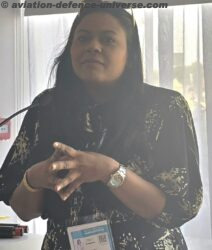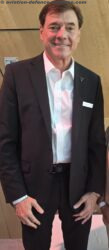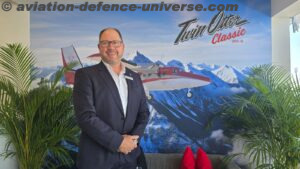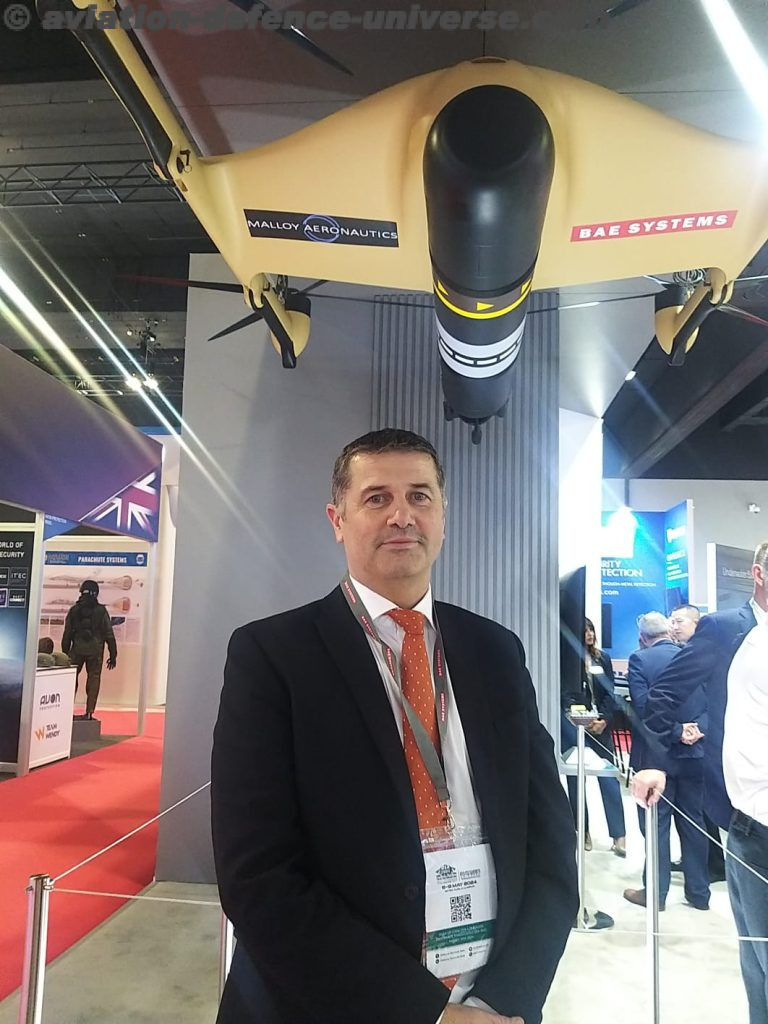
By Sangeeta Saxena
Kuala Lumpur/New Delhi. 24 May 2024. “The T-650 is a technology demonstrator and is a natural progression from the previous T-600s T-150s and is the platform we proof test the capabilities we’ve been considering and will develop further. We’ll be looking at areas such as the casualty evacuation and strike to consider how we can start to counter closer support activities and support those on the ground. These scenarios will keep evolving as we work with our customers,” informed Paul Roberts, Business Development Manager for the Entities and Partnerships business at BAE Systems in an exclusive interview with Aviation & Defence Universe (ADU) at DSA 2024 .
“BAE Systems is for the first time talking to people about the T-650 uncrewed air system. One of the unique selling points of the platform is its ability to carry a class-leading 300 kilograms payload and this is done through some large batteries which are we believe the heaviest battery energy consumption in the market. We’ve started to develop the T-650 with the mindset of reconfigurability and flexibility. So one of the scenarios we set out on the stand is casualty evacuation. This is where this asset can go into hard-to-reach locations and do what it needs to do and return from the situation whereas other expensive assets put people in harm’s way to do this,” Paul added.
Lets get to know the T-650. It is a potential new solution to provide military, security, and civilian customers with a cost-effective, sustainable rapid response capability is the development of an all-electric “heavy lift” uncrewed air system (UAS), which BAE Systems and its subsidiary Malloy Aeronautics have announced plans to investigate. The Malloy Aeronautics team at BAE Systems is investigating ways to advance the capacity, design, production, and promotion of a concept vehicle. 300 kg is the maximum payload, with a range of 80 km without a payload, 30 km is the maximum payload range and 140 km/h is the maximum speed.
“The T-650 concept’s class-leading payload of 300 kg is its most important feature, as it will create opportunities for novel and disruptive mission types. This kind of vehicle enables quick reconfiguration between different mission types. It attempts to offer an alternative to conventional delivery methods by giving our customers the adaptability and utility they need to carry out various roles in an economical and sustainable manner. So with the T-650 there’s a range of scenarios we’re looking at as well as military there’s also commercial opportunities therefore we’ve had dialogue with several commercial industries including power and the emergency services. However our focus remains on the military capacity and what can be delivered over the course of a mission. There is an opportunity to evolve the payload capabilities too. An example of some of the scenarios undertaken during the trial and evaluation period is heavy lift ship to shore and ship to ship logistics movements and this has been undertaken done by our customers in the US the UK. We have a customer in Japan who just acquired two as well so the customers undertaking their own evaluations from the Arctic to the hot and dry climate of California and in the maritime domain,” explained Paul.
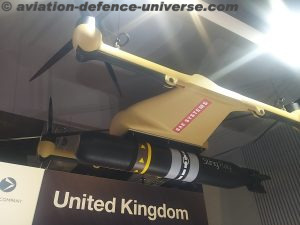
The T-650 is expected to have an open system architecture that will allow for the integration of systems from outside parties and an upgrade path for new payload and mission capabilities. Applications for a product in the T-650 class are quite numerous. These include the possible transportation of weapons and sensors to support military operations on land and at sea, as well as logistics activities like ship-to-ship and ship-to-shore movement. The Electric Air vehicle may find broader uses after it is proven, like the evacuation of casualties from combat zones. Numerous civilian and commercial use cases, such as support for humanitarian efforts and logistics, have also been identified; nonetheless, the initial focus is still on military applications.
“Another scenario you can see on the stand is anti-submarine warfare, in September 2023 we successfully demonstrated the carriage and release of an inert Stingray torpedo when a training variant torpedo was successfully released in the presence of NATO’s premium naval forces. Other examples include ISR with a commercial application lifting heavy kit, tools and maintenance equipment to the top of a wind turbine. The US has demonstrated using the platform to move blood around the Middle East to where it’s required. As you can see uses are evolving and the reconfigurability of the platform along with it’s the flexibility which gives the customer what we describe as an all-in-one combined utility usage for this platform,” he elaborated.
Malloy Aeronautics became a fully owned subsidiary of BAE Systems in January 2024. As before, work will go on towards the development of the T-650. You can find more details by clicking this link: Malloy Aeronautics, a British technology company, is acquired by BAE Systems. Engineers from BAE Systems and Malloy Aeronautics have been working together to develop the 300 kg T-650 all-electric “heavy lift” UAS as a possible new way to provide military, security, and civilian customers with a rapid response capability that is sustainable and affordable. During a major NATO exercise known as REPMUS (Robotic Experimentation and Prototyping with Maritime Uncrewed Systems), the companies announced last year that the successful demonstration of T-600 electric uncrewed demonstrator aircraft achieved a significant milestone. Falcon Works, the research and development division of BAE Systems’ Air business, will include Malloy Aeronautics.
“So it’s the first time the T-650 and I have come into Malaysia and so far we’ve had a good deal of interest from a range of services. It’s not just the Air Force but other services too and for the market we want to make our presence known and let people know that we’ve got the capabilities, we’ve got the innovation and we’ve got the platforms. It’s all based out of the UK at the moment where we have our Malloy colleagues and our BAE Systems colleagues collectively contributing to proof testing to meet future UK and international opportunities.” informed Paul.
It may be recalled that the T-650 made its debut at the DSEi 2021 in London. It was created in association with BAE Systems and displayed with a Sting Ray torpedo on it. It was demonstrated with three Brimstone ground-attack missiles in September 2022.
He concluded that currently US Marine Corps, the US Navy, the UK Navy, and the UK Marine Corps are evaluating these assets . As it’s electric there are less moving parts o they are easy to maintain and run. We’re getting constant feedback covering other scenarios and uses we can develop including mine countermeasures. I’ve touched on Japan’s recently announcement that they’ve acquired two so it’s an exciting opportunity for the Malloy and BAE Systems T-650.
